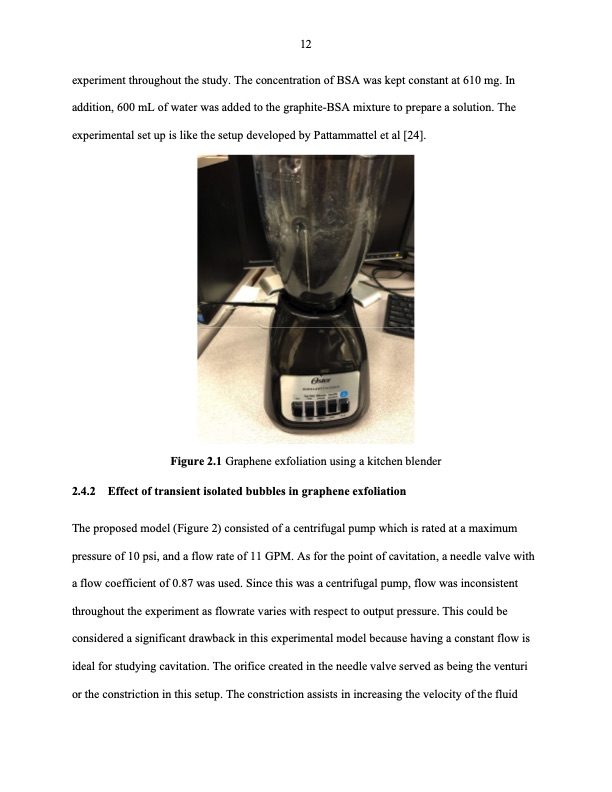
PDF Publication Title:
Text from PDF Page: 018
12 experiment throughout the study. The concentration of BSA was kept constant at 610 mg. In addition, 600 mL of water was added to the graphite-BSA mixture to prepare a solution. The experimental set up is like the setup developed by Pattammattel et al [24]. Figure 2.1 Graphene exfoliation using a kitchen blender 2.4.2 Effect of transient isolated bubbles in graphene exfoliation The proposed model (Figure 2) consisted of a centrifugal pump which is rated at a maximum pressure of 10 psi, and a flow rate of 11 GPM. As for the point of cavitation, a needle valve with a flow coefficient of 0.87 was used. Since this was a centrifugal pump, flow was inconsistent throughout the experiment as flowrate varies with respect to output pressure. This could be considered a significant drawback in this experimental model because having a constant flow is ideal for studying cavitation. The orifice created in the needle valve served as being the venturi or the constriction in this setup. The constriction assists in increasing the velocity of the fluidPDF Image | Hydrodynamic cavitation exfoliation layered graphene nano

PDF Search Title:
Hydrodynamic cavitation exfoliation layered graphene nanoOriginal File Name Searched:
DeAlwis-iastate-0097M-19074.pdfDIY PDF Search: Google It | Yahoo | Bing
Salgenx Redox Flow Battery Technology: Power up your energy storage game with Salgenx Salt Water Battery. With its advanced technology, the flow battery provides reliable, scalable, and sustainable energy storage for utility-scale projects. Upgrade to a Salgenx flow battery today and take control of your energy future.
| CONTACT TEL: 608-238-6001 Email: greg@infinityturbine.com | RSS | AMP |